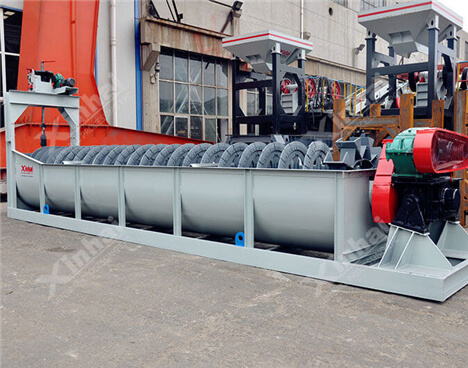Classification operations in the grinding and classification process
2021-11-09 Xinhai (2222)
2021-11-09 Xinhai (2222)
If you have any questions, please contact us through the following ways, we will give you more and better assistance!

Grinding and grading operations are within the scope of ore preparation operations and are the follow-up process after crushing and screening. The position and role of the classification operation in the process are divided into 5 types.

Pre-classification is generally not used before the first stage of grinding. It is only considered when the feed size is less than 6-8mm and the qualified product content in the feed is greater than 15%. The main function of pre-classification in the process is to pre-separate the qualified products for the ore, so as to increase the processing capacity of the ore mill, or to separate the secondary sludge for the next step.
The function of closed-circuit grinding inspection and classification is to control the particle size of the grinding products. The classification returns to the grinding machine to increase the ore throughput per unit time of the grinding machine and increase the production capacity of the grinding machine. However, the circulating load of the returned sand will affect the production capacity of the grinding machine.
The inspection and classification in the first stage of grinding and the second stage of grinding can make the grinding machine work effectively, avoid over-grinding and meet the requirements of grinding fineness for the next stage of sorting operations. Therefore, it is always necessary to check the classification work.
In the first stage of grinding, a very fine final product must be obtained, or when stage separation is to be performed in the first stage of grinding, or a hydrocyclone is required for classification, the coarser must be removed in a mechanical classifier. In the case of particles, overflow control is used for grading operations.
The purpose of the returned sand control classification is to reduce the content of qualified products in the returned sand. Although the effect is not significant, and a classifier needs to be added to increase the complexity of the configuration, it is still used in practice.
The local closed-circuit grinding inspection classification is not only the inspection classification of the first stage grinding, but also the pre-grading of the second stage grinding. The main feature of this classification process is that the load of the second-stage grinder is not changed by overflow, but by sedimentation, so the load between the two-stage grinder is easy to distribute and adjust. However, the classification process also has drawbacks. One stage of classification removes a large amount of sludge, which greatly reduces the amount of sludge in the second stage of classification, reduces the viscosity of the slurry, and makes the classifier work unstable.